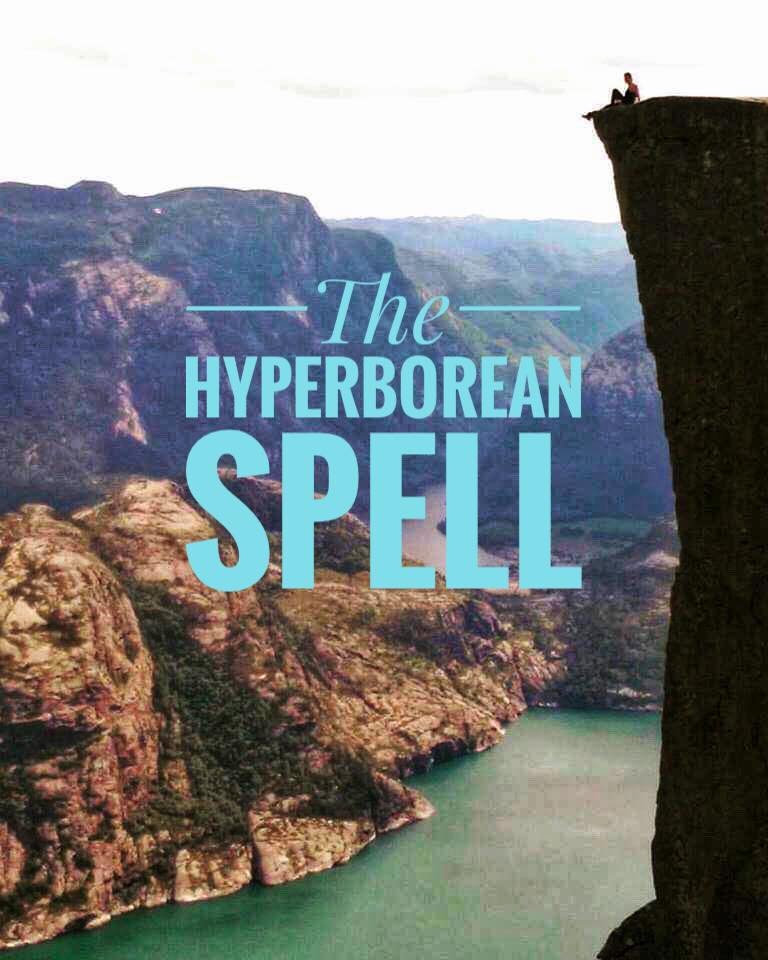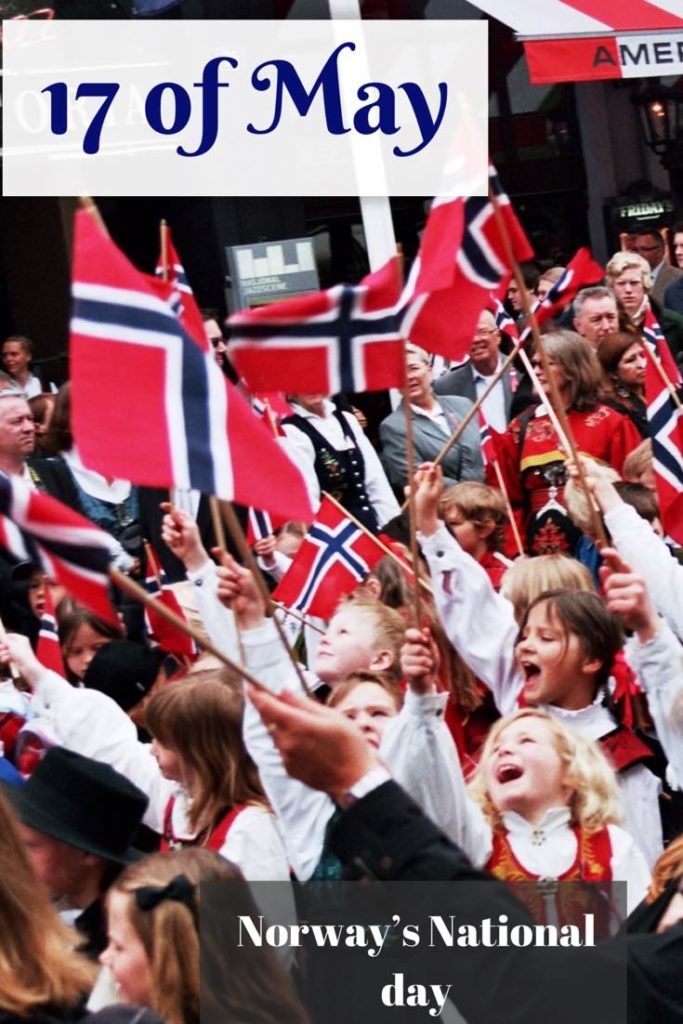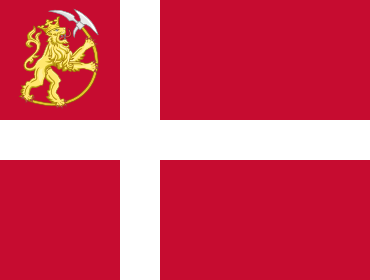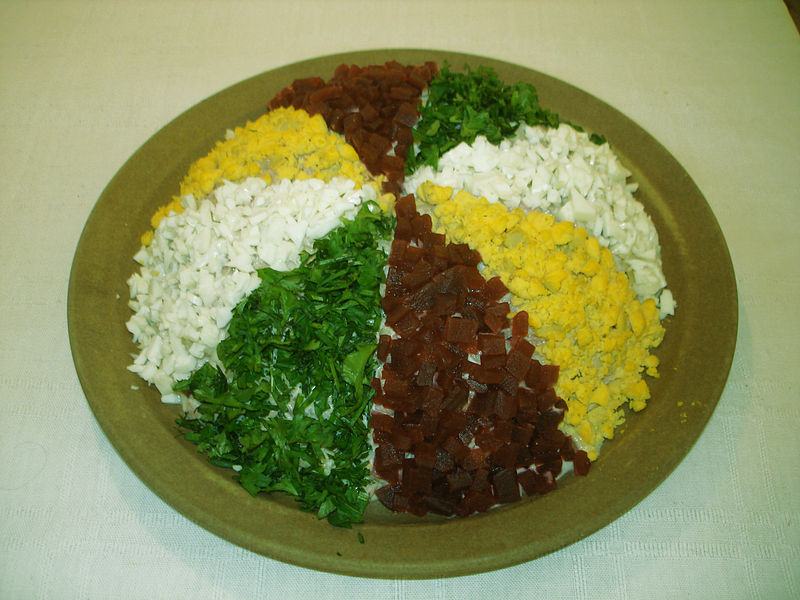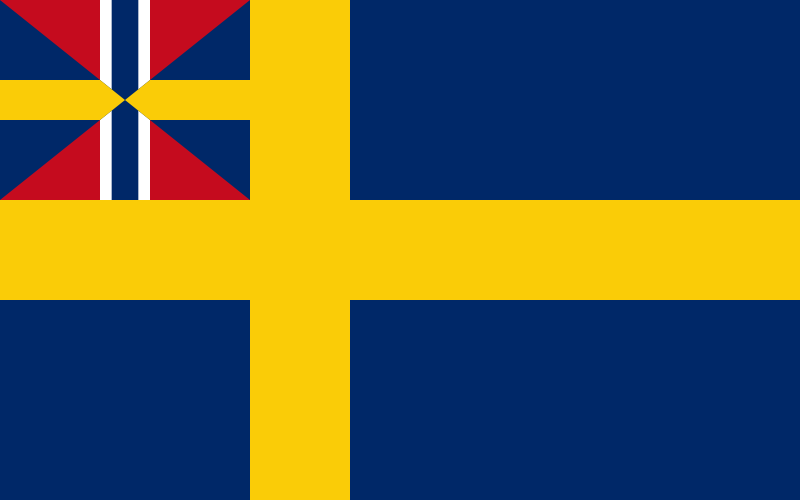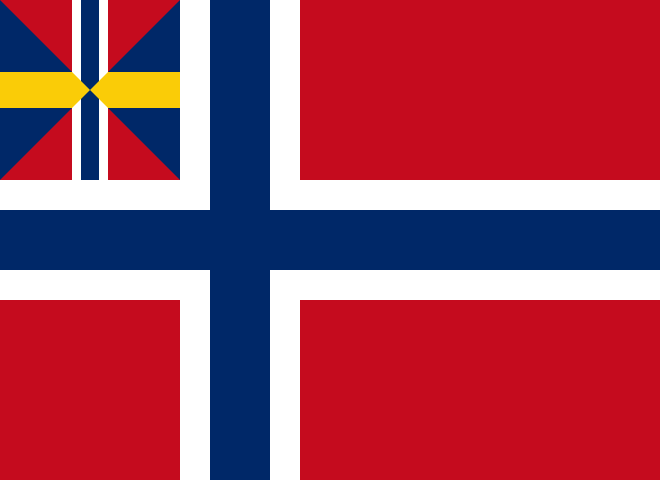
Hipp hipp hurra! Gratulerer med dagen, Norge
17 of May is probably the most important date in Norway. Bigger and more celebrated than Christmas.
It’s my second Syttende May and I love it. Norwegians are so happy on this day. Everyone has a smile on their face, they turn super social, even starting conversations, there is children laughter everywhere, and there is tons of food and alcohol. What more could you ask when celebrating your national day?
Doesn’t matter if its raining or cold, all Norwegians have a smile on their faces.
It’s a long tradition that crosses generations and geography. Celebrated by all ages and by all Norwegians across the globe. It’s a day about all Norwegians, a “we” day, with a lot of focus in the community, so they go to the schools, meet their neighbors, meet the people in their clubs and groups. There is a sense of unity in the air.
But for all of you that never heard of Norway’s 17 of May, here’s the basics.

Traditions
It’s Norway’s biggest street party – eclipsing even New Years Eve celebrations. The cities are decorated with flowers and flags. This day always starts with the children’s parade. Due to this being one of the core foundation for the celebrations and it’s longest tradition. At 7a.m the orchestras, marching bands and parades begin their routes, always waving flags and cheering.
One of the main traditions is to eat as much as you want, especially ice cream, waffles, cakes and hot dogs. No matter how’s the weather, this is the day of the year the whole country consumes the biggest amount of ice cream.

Norwegians tend to be very conscious on their nutrition, having healthy choices during the week meals. Their intake on alcohol, sweets and junk food is only done in weekends. But 17 of May is a special day, just like Christmas when you forget about health and calories. Therefore the cities usually have a lot of food stands with the already mentioned typical foods. There will be a lot of drinking. Everywhere you will find “happy” drunk people. Or wouldn’t this celebration be famous for its “Champagne breakfast”. Not all Norwegians leave their houses so early to watch the parades. Most are really fond of their champagne breakfast. It can be made at home by yourself or have a morning party with your friends or family. They consist mainly of eggs, open sandwiches, fresh fruit, porridge, and flag decorated berry cakes and all accompanied by champagne.
The dresscode for this day is very specific, one must wear it’s bunad. If you don’t own a bunad you should dress fancy, put on a dress and some heals, men put on some suit. Everyone is in party mode on, just like a big wedding.
On 17 May Norwegians paint the town red… and white, and blue. The flag is indeed a big part of the celebrations, and your party kit is not complete without one.

To sum up, the day plan consists in 3 main activities: champagne breakfast, watching the parade, and have drinks and food the rest of the afternoon. Doesn’t it sound like an amazing day?
The History
Until 1814 Norway wasn’t an independent country, it was part of a 400 year old Danish-Norwegian union. By the end of the Napoleonic wars Denmark was on the losing side and was lead to sign the Treaty of Kiel (Kieltraktaten) to end hostilities between them and the Swedish and British alliance. In this treaty, signed on the 1st of January 1814, Denmark gave Norway to Sweden in exchange for the Swedish Pomerania. Norwegians weren’t happy, so the Constitution was born out of protest, as a political power play in hopes of getting the attention and support of the British in their independence claim.
On 17 of May 1814 Norway’s Constitution was dated and signed by the Presidency of the National Assembly at Eidsvoll. This initiated a short period for Norway as an independent state. It didn’t last long, and before the year ended, Norway became part of a personal union with Sweden. After the rebellious act of Norway, Sweden declared war. A ceasefire was obtained with the Moss Convention, but lead to the union between the two countries. The convention stated that Norway accepted a personal union with Sweden, but retained the Constitution with the changes that the Union’s entry needed, independence and separate state institutions, except for the King and the Foreign Service.
The Constitution reflects Norway’s fight to be free and independent. The first celebration for the May 17th took place in Trondheim in 1815 with the Danish-Trader Matthias Conrad Peterson as initiator, even though they were again part of another country.
The celebrations were kept after the union with Sweden but only until 1828, as they were thought by the Swedish and Norwegian king Carl Johan, as a provocation against Sweden and the Royal family, and therefore forbidden. After King Carl Johan’s death in 1844, his son Oscar allowed for the celebrations to be held again. Still there are reports of celebrations being held during this period, for example in Stavanger in the early 1830’s there was a canon shots salute at Skansen.
National day celebrations had a second ban during the Second World War. During this period the trains and using clothes with the colors of the Norwegian flag were forbidden. Even though, like before, Norwegians kept protesting and celebrating the day.
Nonetheless, historically Norway’s national day is not the day the country became independent. That day only came years later on 7th of June 1905. So way such focus on the 17 of May and not 7th of June??
It appears to be just a case of tradition.
Celebrating the 17 of May was a tradition before the independence, it was a form of protest against the Union and a way to remember and focus on Norway. The day gained a big importance in Norwegians hearts. Besides, being the Constitution a direct cause of the independence the two are intricately connected.
The Parades
This day is communly refered as the “Children’s Day” «barnas dag» due to the focus point of it being the childrens parade.
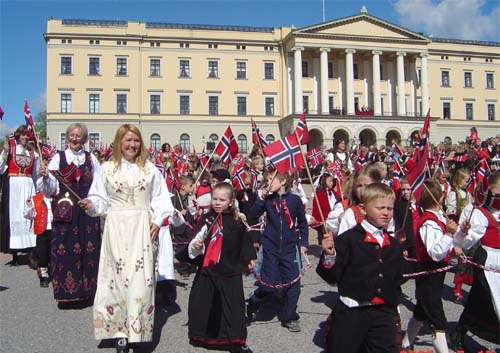
It began when poet Bjørnstjerne Bjørnson took the initiative for the first children’s train in 1870, in Oslo. After getting the idea from his friend school manager Peter Qvam that had arranged the first children’s train with pupils from his school the year before. This first parade gathered around 1200 boys. The girls started participating only in 1889.
During the 1870s, the union became increasingly unpopular in Norway, seen as a union forced upon the country against its will. The celebration on the Constitution was again a protesting way defending the Independence. Having a Children’s parade instead of the common military parade allowed for the celebrations to be held without posing a threat to Sweden. Also it’s neutral character was a positive point in the 1930’s in making Norway a democratic country that could stand as a counterweight to communism and Nazism.
After the morning children parades comes the adult parades – Folketoget – or the people’s train. These are composed by different groups from arts and music associations, companies, sports clubs, charities, social groups and any other organization from the area.

The russeparade is marked by its enthusiast as the students – russ – shout slogans, sing and throw water.
Obviously the parades are accompanied by groups or orchestras playing live music and all the participants hold flags and signs from their group, or Norwegian flags.
The songs
A parade isn’t a parade without music. There are always orchestras accompanying them and these are some of the traditional songs that are played this day.
- Yes we love this country
- Norway in red, white and blue
- Kongesangen
- God bless our precious fatherland
- Old hunter march
- We are a nation we are with ( Smaagutternes Nationalsang )
- Here we come young in herd
- May 17, I am so fond of
From all of these – Yes, we love this country – is Norway ‘s de facto national anthem . It has never been adopted as a national anthem, but has gradually become the most recognized of the national anthems. Written by Bjørnstjerne Bjørnson in 1859, with melody by Rikard Nordraak, dedicated to King Karl IV.
The Russ
Right before finishing high school norwegian students celebrate the end of their 13 school years and party like there is no tomorrow before enganging in the responsible adult life of college. Starting in April or May they become Russ and engage in crazy russ activities – russefeiring.
The term russ has two possible meanings and origins. The generally accepted by Norwegians is that it comes from the latin cornua depositurus, which means “to put aside the horns”, connected to the rite of passage of university admission. Another logic explanation is russ being a diminutive for the latin word rusticus. Rusticus means rustic and rural, and could have an origin in the mocking of older students towards the “farmer” Norwegian students.

In the 17th century, being no universities in Norway, students would usually go to the University of Copenhagen. After doing the exams for admission the students had horns placed in their foreheads, to be recognizable and mocked by senior students. As a result of being accepted in the University the horns would be removed as a sign of losing the horns or their wildness, subjugating the wild animal in them and becoming wise university students.
Their Russefeiring are marked by the daily use of a uniform – an overall – with the color of their studies. Red for general studies, blue for economics and administration, black for vocational studies (like cooking, electronics, masonry), green for agricultural, and white for athletics and healthcare. They buy buses to party all over town with loud music. Make their “fake business cards” with a selfie and a slogan as a joke, giving them to everyone. There’s a set of challenges every year where they gain rewards – Russ knots – Russeknuter. These can be simple things like eating a Big Mac in two bites or more complicated and illegal activities like public sexual intercourse.
The buses or vans they buy have huge sound systems and are decorated for the group ending up costing several thousands of kroners per student. They can get sponsors for their buses witch helps with the costs.
Since the russ activities finish at 17 of May the night before is the biggest Russ party of all!! So russes are usually tired and hangover in the national day, but they still show up and celebrate.
The Bunad
The Bunad is a traditional folk costume, inspired by folk costumes that Norwegian farmers used in the 19th century.
Mainly composed by a skirt or shorts and long socks (woman and man), shirt and vest, always embroided and decorated by filigree silver ornaments – like the halsknapp (neck closure) and a sølje (brooch). They can have a lot more components like scarfs, shawls, headdresses, aprons, jackets, capes and purses. There is also special shoes – the Bunadsko. A simple outfit can start at 19,000 kroner and the whole thing can set you back 70,000 kroner (around 7,000€).
Bunads change from area to area, having over 100 different designs, patterns and fabrics. Above all they are identity markers, representing from which part of Norway you are from.
So many different Bunads
The importance of the cultural heritage of the traditional costume became so big that in 1947 the National Bunads Committee was formed. It later changed it’s name to Norwegian Institute for Bunad and Folk costumes (Norsk institutt for bunad og folkedrakt – NBF). This national scientific institution documents, researches and studies the dissemination of folk costumes and bunad as cultural expressions, and the use and production of these types of costumes.
Nowadays there is even education in producing Bunads, meaning you can be a Bunadstilvirker, studying 4 years to become a specialized Bunad manufacturer.
The Flag
Current Norwegian flag has a dark blue Nordic cross with white edges on a red bottom. The design of Frederik Meltzer was oficialized on May 17, 1821. Meltzer reasoned its proposal that the new flag should have the colors of freedom: red, white and blue, and a traditional design. The colors may also represent a compromise, the old ties to Denmark – the original red background with a white cross, but also the new union with Sweden – the addition of the blue.
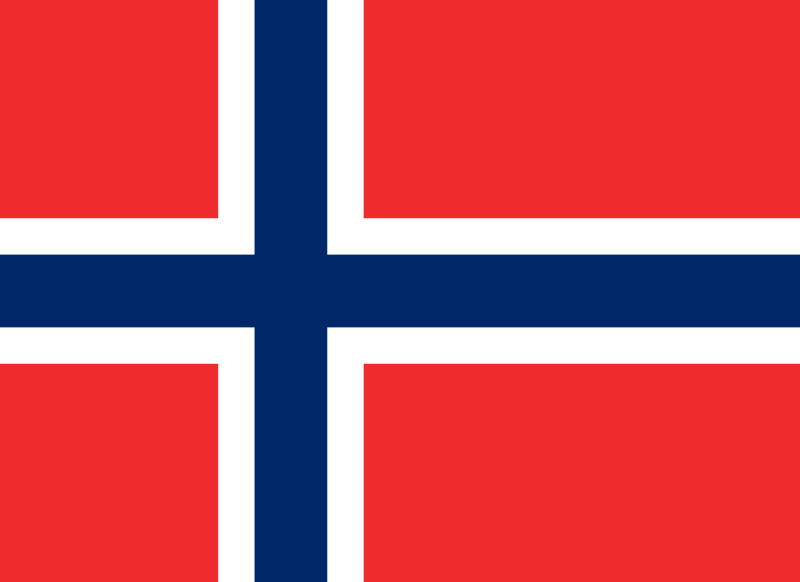
During the Union with Denmark Norway’s flag was the Danish one. After the separation, Norway altered their flag and added the golden lion to the top corner. This lion represents the King of Norway. Since Eirik Magnusson in 1280, Norwegian kings carry the kings flag – Kong flag – a golden lion with a crown and an axe, on a red background.
After the Union with Sweden, Norway’s flag became Swedish flag with a corner representing Norway. Initially it was a red background with a white cross – the union merchant flag.
The flag changed again in 1844, when a Union mark was created. Now the Norwegian flag was the 1821 with the blue cross, but the top corner had the union mark. This mark commonly called the Herring salad, for the resemblance of the colors with the dish, was a sign of equality of both countries in the union. Both flags were represented equally in the mark, and the Swedish flag also added the mark to its top corner.
But the 1870’s were a time for revolution in Norway and the union mark was a constant symbol of imprisonment. The parliament finally got the mark abolish from the flag in 1898, becoming the pure Norwegian flag until today.
From Left to right – 1- the King’s Lion, 2 – 1814 after signing the Constitution, 3 – 1814 Swedish flag with corner mark representing Norway, 4 – Herring salad, 5 & 6 – Swedish and Norwegian flags with union mark representing their equality. Source: wikimedia commons
Funny fact – Norway has very specific laws concerning its flag. On 17 of May the flag is hasted all day but apart from that the laws dictate that the flag is hoisted in the months March through October at 08h00, in the months of November through February at 09h00. The flag is hauled at sunset, but not later than 21h00 if the sun goes down after this time.
The Biggest party of the Year
In conclusion, to be prepared for 17 of May you need:
- Big appetite and to forget your diet
- Dress for a weeding – with a Bunad or your best outfit
- Get a Norwegian flag and wave it like there’s no tomorrow
- Learn some basic norwegian like “gratularer med dagen” (congratulations for the day)

Now you have everything you need to know about May 17th.
Come and celebrate with us. Whether you are Norwegian or not, this is a party for everyone.
Share this post with your friends.
“Knowledge increases by sharing but not by saving.”
― Kamari aka Lyrikal
